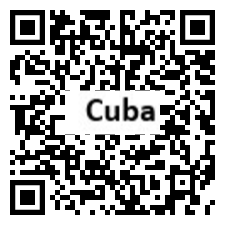Introduction
Background
The native Amerindian population of Cuba began to decline after the European discovery of the island by Christopher COLUMBUS in 1492 and following its development as a Spanish colony during the next several centuries. Fidel CASTRO led a rebel army to victory in 1959 and his authoritarian regime continues to rule.
Geography
Area
total: 110,860 sq km
land: 109,820 sq km
water: 1,040 sq km
Climate
tropical; moderated by trade winds; dry season (November to April); rainy season (May to October)
Natural resources
cobalt, nickel, iron ore, chromium, copper, salt, timber, silica, petroleum, arable land
People and Society
Population
10,985,974 (2023 est.)
Ethnic groups
White 64.1%, Mulatto or mixed 26.6%, Black 9.3% (2012 est.)
Languages
Spanish (official)
Religions
Christian 58.9%, folk religion 17.6%, Buddhist <1%, Hindu <1%, Jewish <1%, Muslim <1%, other <1%, none 23.2% (2020 est.)
Population growth rate
-0.19% (2023 est.)
Government
Government type
communist state
Capital
name: Havana
Executive branch
chief of state: President Miguel DIAZ-CANEL Bermudez (since 19 April 2018); Vice President Salvador Antonio VALDES Mesa (since 10 October 2019)
head of government: Prime Minister Manuel MARRERO Cruz (since 21 December 2019); Deputy Prime Ministers Ramiro VALDES Menendez, Ines Maria CHAPMAN Waugh, Jorge Luis TAPIA Fonseca, Alejandro GIL Fernandez, Ricardo CABRISAS Ruiz (since 21 December 2019), and Jorge Luis PERDOMO DI-LELLA (since 20 April 2021)
Legislative branch
description: unicameral National Assembly of People's Power or Asamblea Nacional del Poder Popular (605 seats; (586 seats filled in 2021); members directly elected by absolute majority vote; members serve 5-year terms); note 1 - the National Candidature Commission submits a slate of approved candidates; to be elected, candidates must receive more than 50% of valid votes otherwise the seat remains vacant or the Council of State can declare another election; note 2 - in July 2019, the National Assembly passed a law which reduces the number of members from 605 to 474, effective with the 2023 general election
Economy
Economic overview
still largely state-run planned economy, although privatization increasing under new constitution; widespread protests due to lack of basic necessities and electricity; massive foreign investment increases recently; known tobacco exporter; unique oil-for-doctors relationship with Venezuela; widespread corruption
Real GDP (purchasing power parity)
$137 billion (2017 est.)
$134.8 billion (2016 est.)
$134.2 billion (2015 est.)
Real GDP per capita
$12,300 (2016 est.)
$12,200 (2015 est.)
$12,100 (2014 est.)
Agricultural products
sugar cane, cassava, vegetables, plantains, sweet potatoes, tomatoes, milk, pumpkins, mangoes/guavas, rice
Industries
petroleum, nickel, cobalt, pharmaceuticals, tobacco, construction, steel, cement, agricultural machinery, sugar
Exports
$2.63 billion (2017 est.)
$2.546 billion (2016 est.)
Exports - partners
China 38%, Spain 11%, Netherlands 5%, Germany 5% (2019)
Exports - commodities
cigars, nickel, sugar, rum, zinc (2021)
Imports
$11.06 billion (2017 est.)
$10.28 billion (2016 est.)
Imports - partners
Spain 19%, China 15%, Italy 6%, Canada 5%, Russia 5%, United States 5%, Brazil 5% (2019)
Imports - commodities
poultry meat, wheat, soybean products, corn, concentrated milk (2019)
Exchange rates
Cuban pesos (CUP) per US dollar -
Exchange rates:
1 (2017 est.)
1 (2016 est.)
1 (2015 est.)
1 (2014 est.)
22.7 (2013 est.)
Page last updated: Wednesday, December 06, 2023
